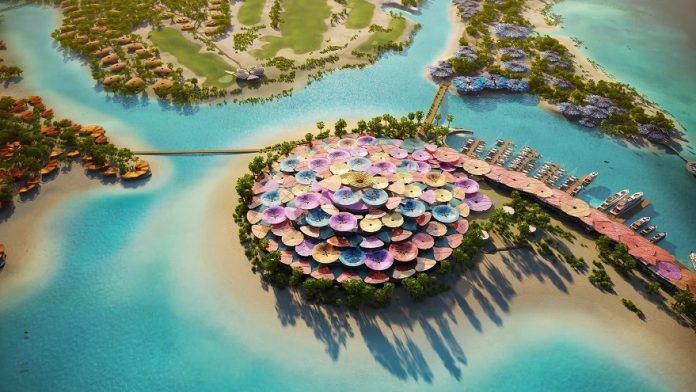Saudi Arabia’s Crown Prince Mohammed bin Salman launched on Wednesday the luxury Red Sea Project “Coral Bloom” designs.
The Red Sea Development Company (TRSDC), chaired by the Crown Prince, will develop the main hub island at the destination, Shurayrah and its 11 resorts, referred to as “Coral Bloom.”
“We expect guests to be awed by what they see when they first arrive at The Red Sea Project, enjoying a truly immersive barefoot luxury experience. The Coral Bloom designs, taking inspiration from the incredible flora and fauna found uniquely in Saudi Arabia, promise to make that vision a reality,” said John Pagano, CEO of TRSDC.
The island will have 11 hotels, designed for a post-coronavirus world and adapted to form part of the dunes of the island, the company said in a statement.
The multi-billion dollar project design will create new beaches created on the dolphin-shaped island along with a new lagoon.
“The Red Sea Project has already passed significant milestones and work is on track to welcome the first guests by the end of 2022, when the international airport and the first four hotels will open. The remaining 12 hotels planned in phase one will open in 2023,” the company said.
“Upon completion in 2030, The Red Sea Project will comprise 50 resorts, offering up to 8,000 hotel rooms and around 1,300 residential properties across 22 islands and six inland sites. The destination will also include luxury marinas, golf courses, entertainment and leisure facilities.”
Saudi Arabia’s Vision 2030 aims to diversify the Kingdom’s economy away from a reliance on oil and push the tourism sector to contribute 10 percent of gross domestic product.
The Red Sea project is intended to be the catalyst for a new tourism industry in a country which is opening up its natural splendor to visitors from around the world. The Kingdom first began issuing tourist visas in 2019 and announced that year that it had attracted $30 billion in tourism investment.
Source: english.alarabiya.net








































